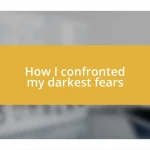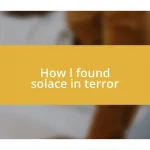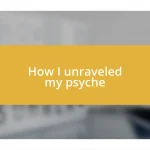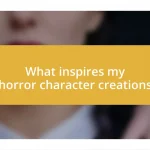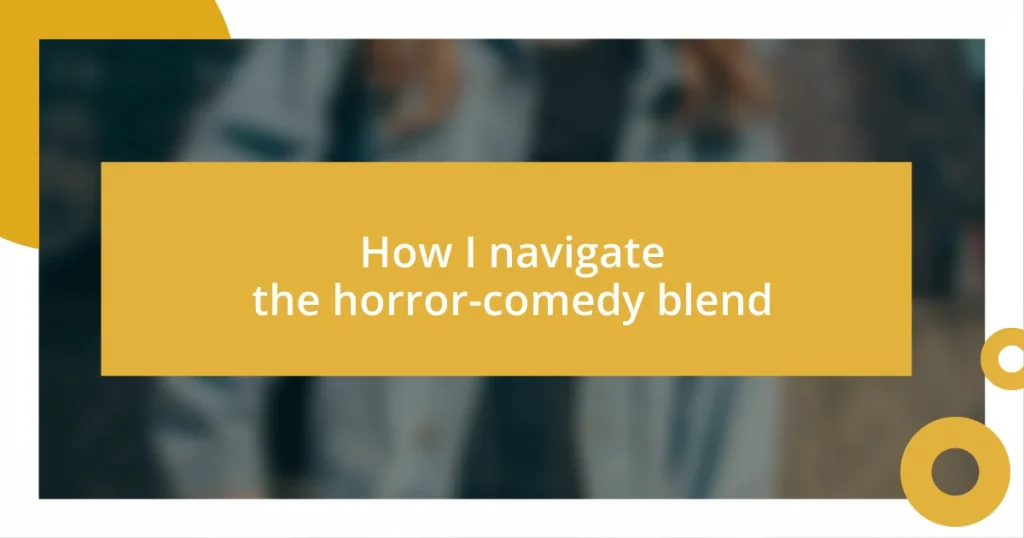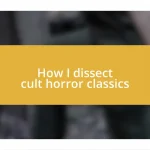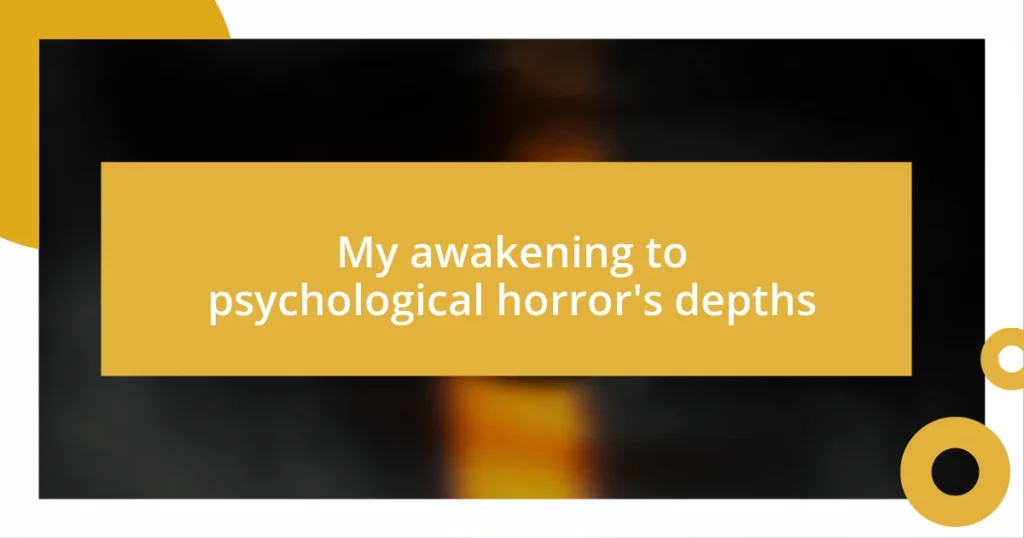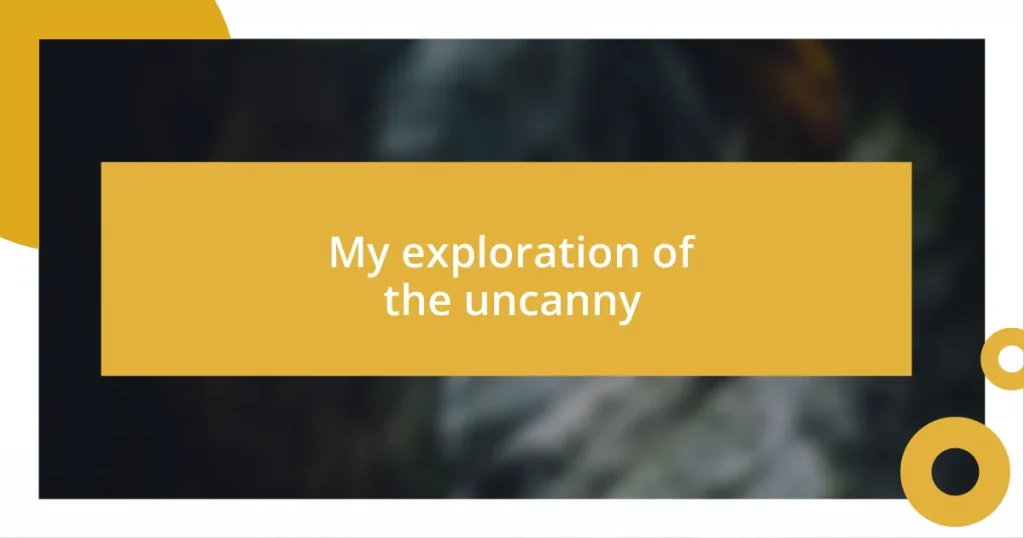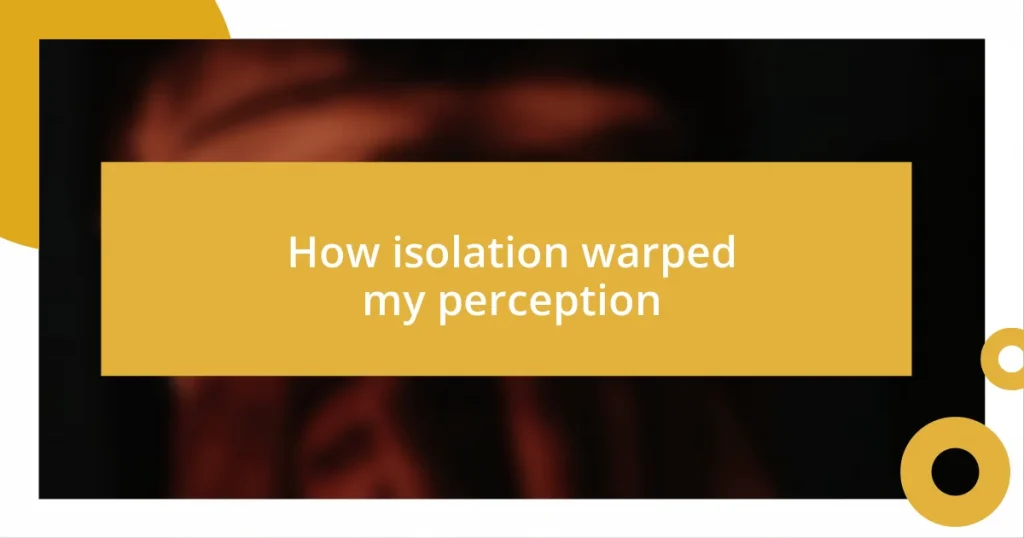Key takeaways:
- Horror-comedy artfully combines fear and laughter, using tension and comedic relief to engage audiences emotionally.
- Choosing the right tone is crucial, balancing horror and humor through character reactions, pacing, and subverting expectations.
- Developing relatable characters with depth, flaws, and compelling backstories enhances both comedic and horror elements, making the narrative more impactful.
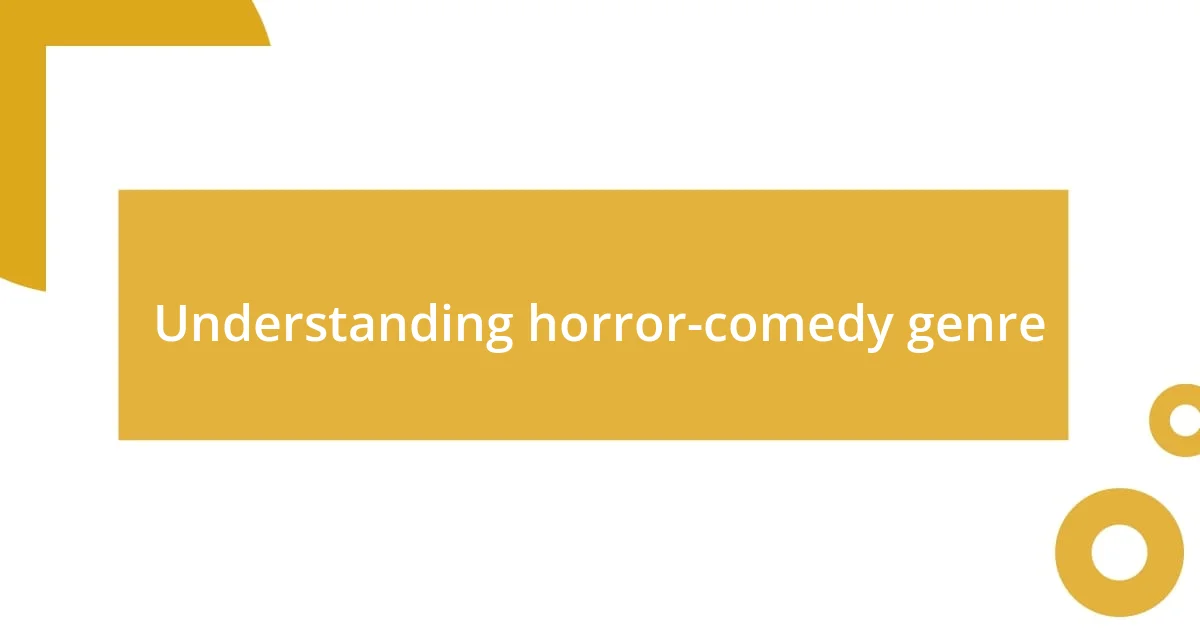
Understanding horror-comedy genre
Horror-comedy is a unique genre that masterfully intertwines fear and laughter. I remember watching “Shaun of the Dead” for the first time; I was laughing one moment and on the edge of my seat the next. It’s fascinating how these films create tension through horror elements, only to relieve it moments later with a well-timed joke.
This balancing act between horror and humor is tricky. Have you ever noticed how a good scare can often be followed by a surprising punchline? It creates this rollercoaster of emotions that keeps you engaged. I appreciate that this genre allows us to confront our fears while also providing a sense of relief, creating a cathartic experience.
At its core, horror-comedy reflects the absurdity of life. When I watched “Tucker and Dale vs. Evil,” I was struck by how it turned traditional horror tropes on their head. Instead of the expected fear, I found myself laughing at the characters’ misunderstandings and the ridiculousness of the situation. It’s this playful juxtaposition that offers both entertainment and a fresh perspective on the human experience.
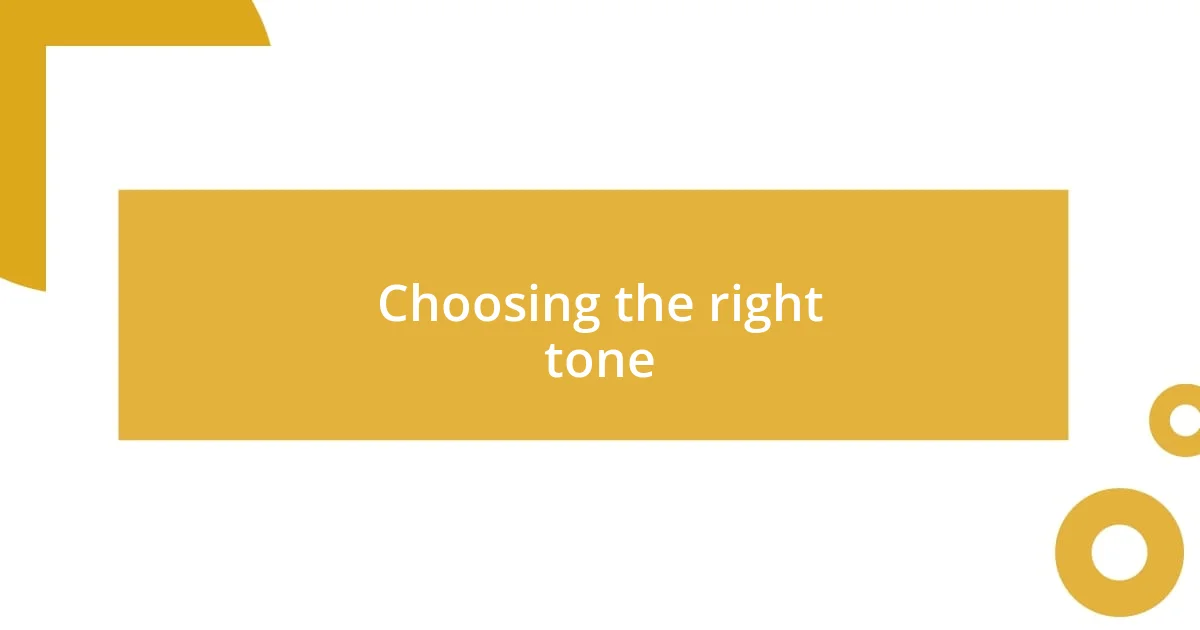
Choosing the right tone
Choosing the right tone in horror-comedy is essential for striking that delicate balance. There’s a nuanced art to knowing when to lean into the fear and when to pull back with comedy. I recall the first time I watched “What We Do in the Shadows.” The absurdity of the vampire characters mixed with genuine horror situations had me laughing out loud, yet I couldn’t help but feel anxious during the bloodier scenes. Achieving this balance allows audiences to experience a wider range of emotions, which can be incredibly engaging.
To effectively choose the right tone, consider the following:
- Know your audience: Understanding what type of humor and horror resonates with your viewers is fundamental.
- Pacing is key: Alternate between horror and comedic moments strategically to maximize impact.
- Character reactions: Use characters’ responses to ridiculous situations to heighten both horror and humor, creating a relatable experience.
- Subvert expectations: Play with audience expectations by delivering surprising twists that blend both genres fluidly.
- Consistency: While you need variability, keeping a consistent emotional tone helps maintain the flow.
Navigating this tonal landscape allows for a richer storytelling experience, making both the horror and comedy feel intentional and expertly crafted.
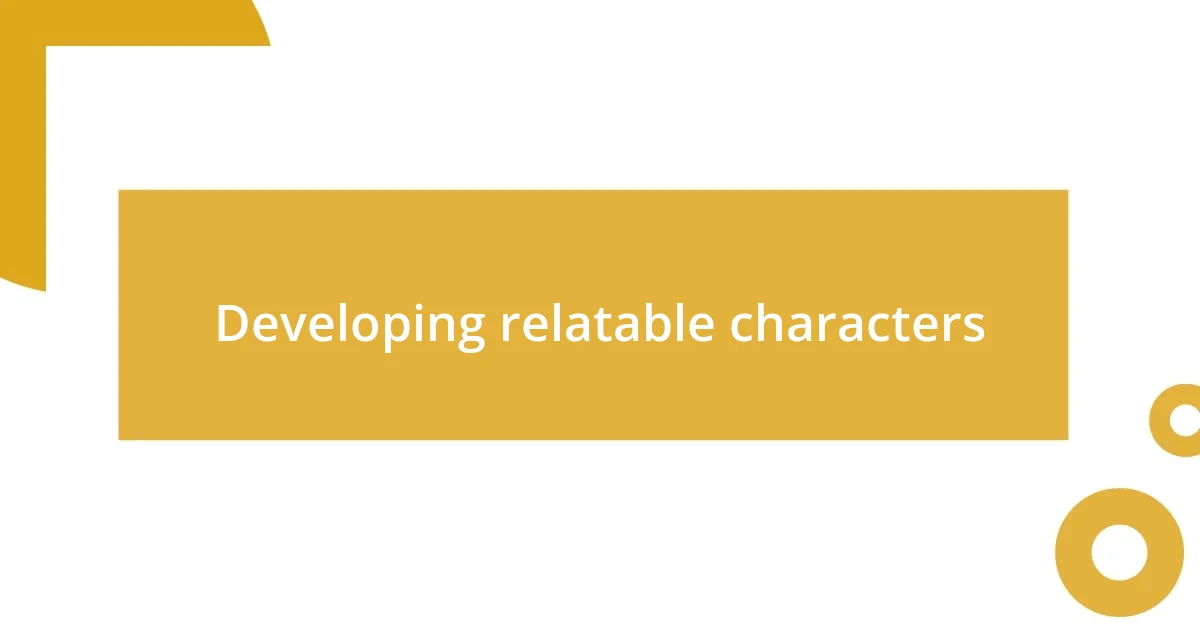
Developing relatable characters
One of the most important aspects of developing relatable characters in horror-comedy is giving them depth and authenticity. I find that characters who display genuine emotions, like fear or confusion in bizarre situations, resonate more with the audience. In “The Cabin in the Woods,” for instance, the characters feel like real people caught in a terrifying scenario, and this relatability enhances both the comedic and horror elements. When viewers can see themselves in a character, every laugh and scream hits harder.
Creating compelling backstories can bring a lot of richness to your characters. I remember crafting a character based on a friend who always finds themselves in ridiculous predicaments; this not only established relatability but also added humor to tense moments. By integrating these backstories into their personalities, you allow the audience to connect emotionally, which enhances the impact of both the horror and the comedy.
Moreover, I believe the characters’ flaws can serve as a source of comedy and empathy. For example, in “Zombieland,” the characters each struggle with their own issues, from fear of commitment to social awkwardness. These quirks provide humor while simultaneously making them feel more rounded and human. Audiences often latch onto these imperfections, making the horror elements feel all the more visceral when their beloved characters are in danger.
| Character Element | Importance in Horror-Comedy |
|---|---|
| Depth and Authenticity | Engages audience through real emotions and relatable reactions. |
| Compelling Backstories | Enhances connection, blending emotional stakes with comedic scenarios. |
| Character Flaws | Creates humor and empathy, increasing tension during scary moments. |
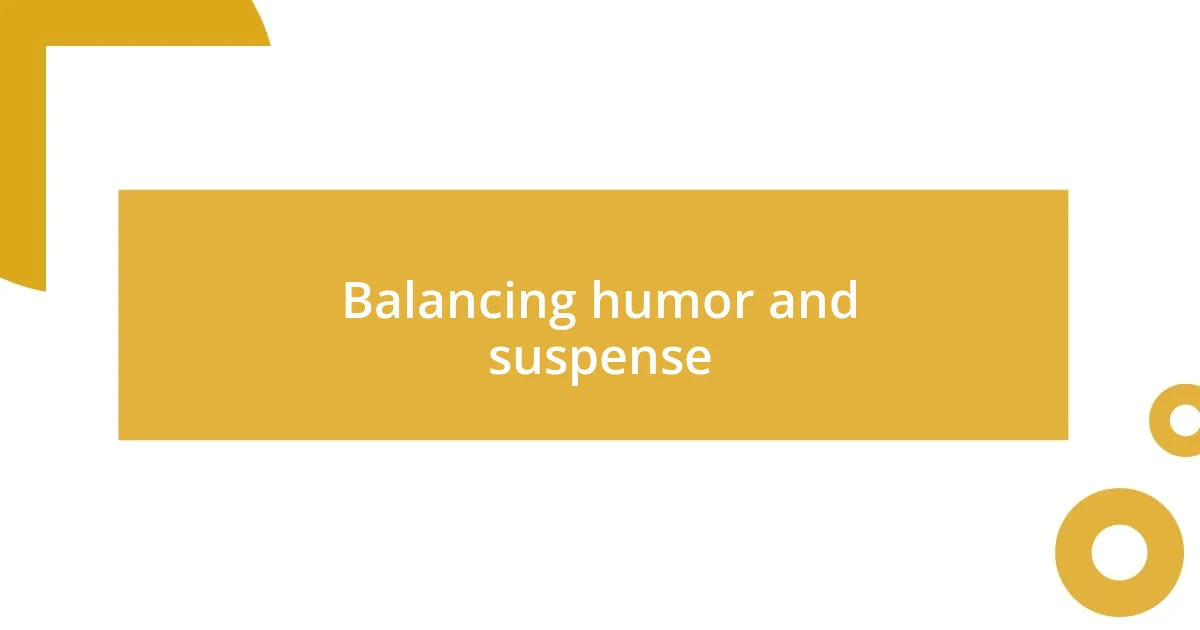
Balancing humor and suspense
When it comes to balancing humor and suspense, timing is everything. I vividly remember a scene from “Shaun of the Dead” where the main characters, in a moment of dire danger, start improvising a ridiculous plan to survive. That laugh-out-loud moment caught me off guard but ultimately heightened the suspense. It made me wonder: how do you keep the audience on the edge of their seats while still allowing them to chuckle? The answer lies in the clever juxtaposition of comedic relief amidst the tension.
The interplay between humor and suspense isn’t just about having a laugh when things get grim; it’s about crafting a rhythm that keeps viewers guessing. I’ve always found it fascinating how a well-placed joke can diffuse an intense moment right before the next scare hits. Think about it: ever felt that brief sense of relief when a character cracks a joke just before encountering a monster? That rollercoaster of emotions—the rapid switch from laughter to fear—creates a dynamic viewing experience that can be addictive.
Transitional moments are equally vital, as they can serve as bridges between the two tones. I often think back to my own attempts at storytelling, where I would intentionally lead the audience into a funny setup before dropping them into a suspenseful revelation. It’s incredibly rewarding to see the recognition on people’s faces as they navigate through the comedy toward the looming dread. Finding that sweet spot not only engages but also keeps your audience eagerly anticipating the next twist—whether it’s a laugh or a scream.
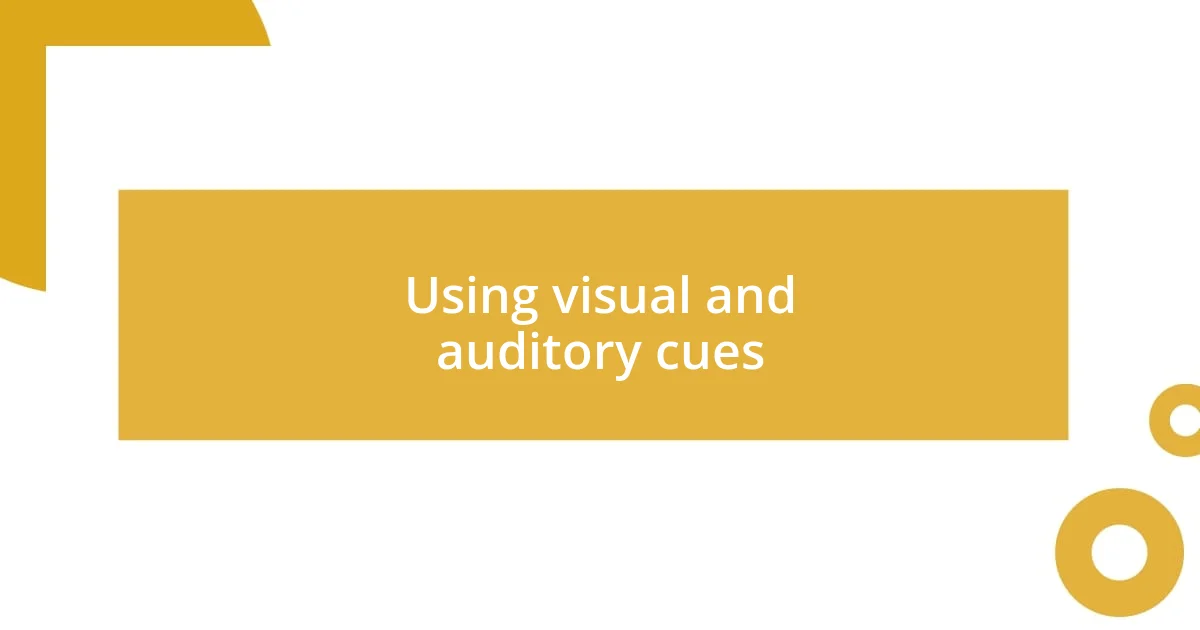
Using visual and auditory cues
When it comes to using visual and auditory cues in horror-comedy, I believe these elements play a pivotal role in setting the tone and guiding audience reactions. For instance, I often notice how contrasting colors can influence my mood; a bright, cheerful room filled with goofy props suddenly shifts to a dim, eerie setting when the comedic character stumbles into danger. That visual transition not only amplifies the impending dread but also makes the humor more impactful since it underlines the absurdity of the situation. Have you seen how a simple change in lighting can change everything?
Sound is just as essential. I still chuckle thinking about the use of upbeat music in scenes from “What We Do in the Shadows” where vampires engage in absurdly mundane tasks. This juxtaposition of lively tunes with mundane yet comedic vampire antics creates a delightful tension that keeps me engaged. When the background score shifts—a sudden drop to silence or an eerie sound effect—it heightens the stakes, reminding me that danger lurks just out of sight. Those auditory shifts can instill a delightful anticipation, making the punchlines hit harder.
While creating my own short film, I experimented with sound effects for comedic relief and horror elements. One scene featured an exaggerated squeaky door opening, and just when the audience was laughing, I paired it with a sudden, deep growl that left a chill down their spines. That moment made me realize the power of timing in visual and auditory cues—the sudden shift keeps viewers on their toes and adds another layer of complexity to the viewing experience. It’s like orchestrating a dance, blending laughter and fear into a rhythm that resonates well with the audience.
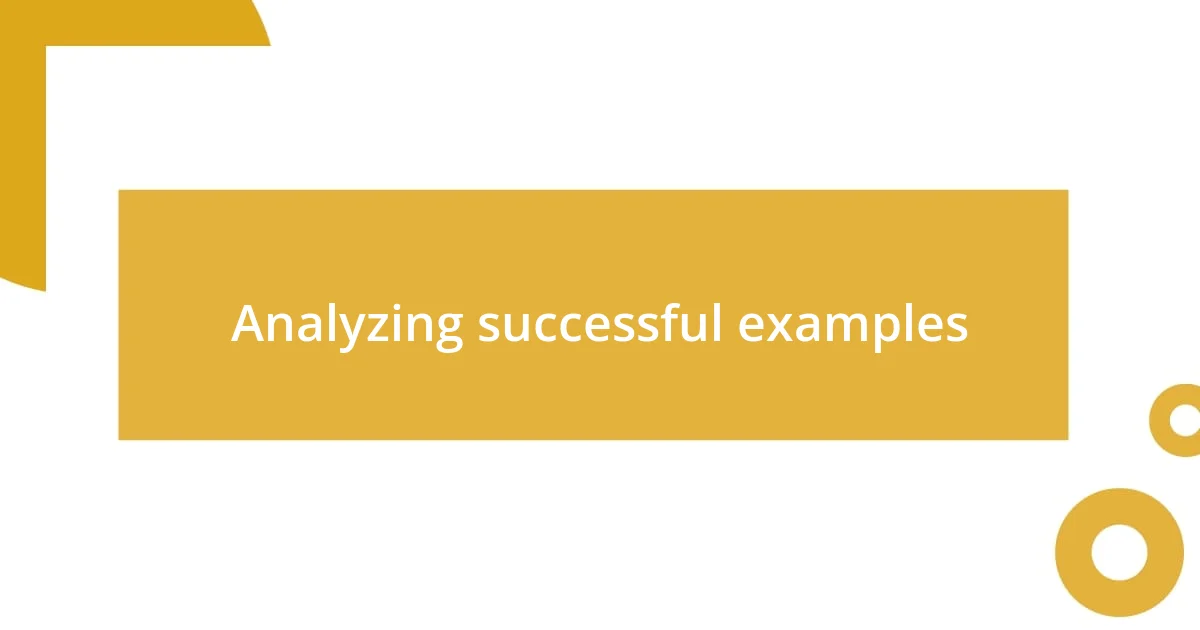
Analyzing successful examples
One of my favorite horror-comedy films is “Tucker and Dale vs. Evil.” The way it subverts typical horror tropes through clever character dynamics is nothing short of brilliant. I remember the first time I watched it, I found myself laughing at moments that should have been terrifying, like when Dale accidentally puts a chainsaw in a situation that makes the characters think he’s a killer. That unexpected twist not only had me in stitches, but it also made me reevaluate my assumptions about horror narratives—what happens when the ‘bad guys’ are actually the victims of a misunderstanding?
Similarly, “The Cabin in the Woods” takes a unique approach by self-awareness. I love how it plays off horror clichés while still delivering genuine scares. There’s a scene where the characters are discussing which path they should take, and it resonates with anyone who’s ever yelled at a horror movie character making a poor choice. That moment had me laughing and squirming at the same time, as it blends the ridiculousness of their decisions with authentic fear and curiosity. How interesting is it to see characters aware of the genre they inhabit, turning the traditional framework of horror on its head?
Another standout for me is “What We Do in the Shadows,” where humor is seamlessly woven into a supernatural narrative. I recall one particular sequence where the vampires are struggling to make a pancake breakfast. The absurdity of these ancient beings fumbling through everyday tasks adds a comedic layer that makes their eventual threat more relatable. It begs the question: in a world filled with monsters, who would have thought mundane life could be so hilarious? I find myself chuckling now just thinking about it, a perfect mix of humor and horror reminding me of how a funny premise can elevate the spooky entertainment experience.
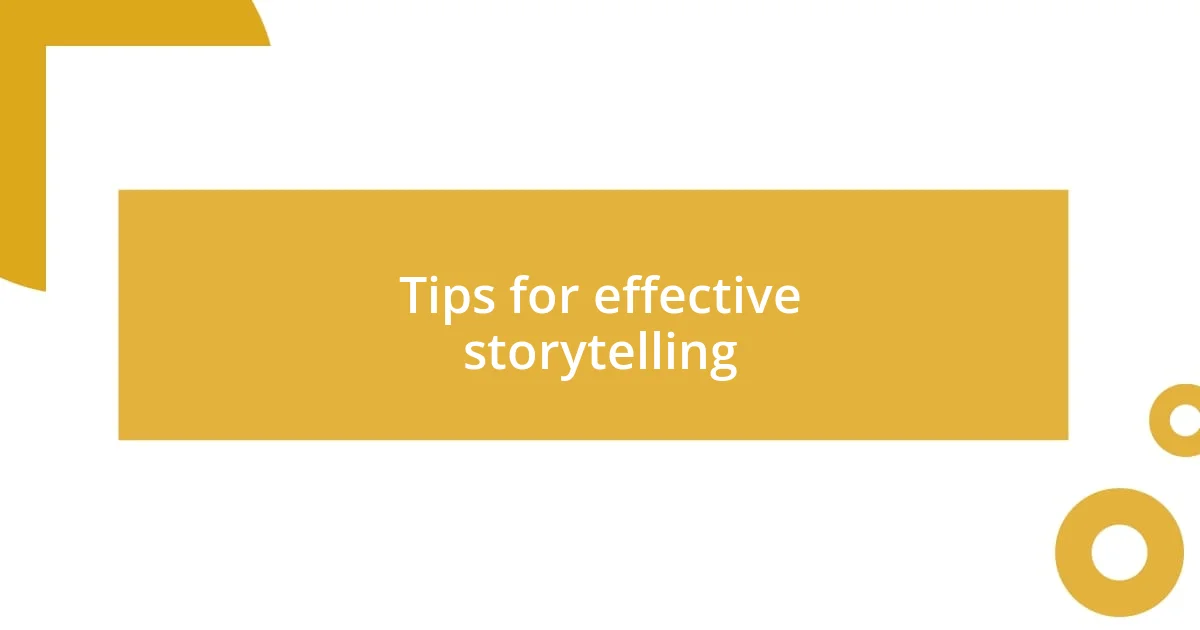
Tips for effective storytelling
One essential tip I’ve learned in storytelling, especially in the horror-comedy blend, is balancing tension and release. For example, I recall a particular scene in my own writing where the protagonist encounters a creepy figure in the darkness. Just as horror builds, I inserted a sudden, hilarious mishap, like the character tripping over their shoelaces. This created a moment of levity that not only lightened the mood but also made the eventual scare more effective—almost as if the audience is given a breather before being thrown back into the suspense. Isn’t it fascinating how laughter can prepare us for chills?
Another effective approach I’ve found is to enrich characters with flaws that are relatable. While working on short stories, I’ve created characters who are endearingly clumsy or absurdly overconfident during frightening situations. I often think about how a character’s awkward quirk, like fumbling with their phone while trying to escape a scary monster, adds humor while keeping the fear palpable. This combination makes them more human, inviting the audience to invest their emotions in both the laughter and the terror. Have you noticed how we connect better to stories when characters feel like reflections of ourselves?
Lastly, never underestimate the power of pacing in your narrative. I’ve experienced how varying the speed of scenes can significantly impact audience reactions. In my productions, I sometimes choose to stretch an awkward moment just long enough to heighten the comedic tension before a sudden scare. That lingering pause can be disarming, leading audiences to confuse their anxious anticipation with excitement, creating a unique experience. What about the way you articulate pacing in your projects—don’t you think it’s crucial in mastering that perfect blend?





